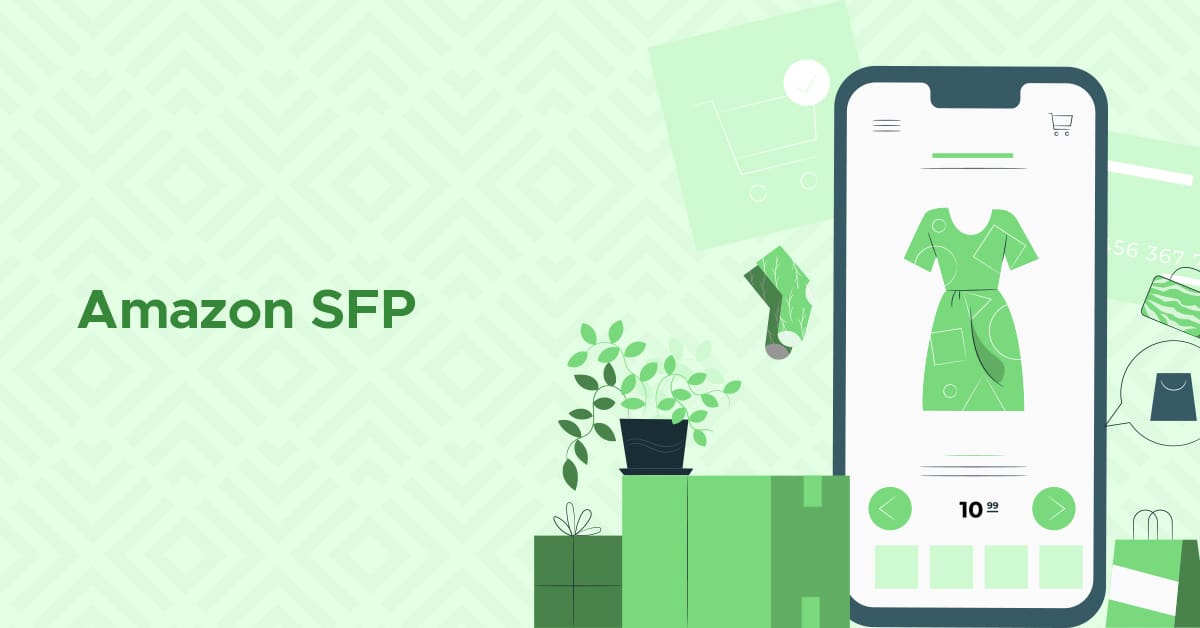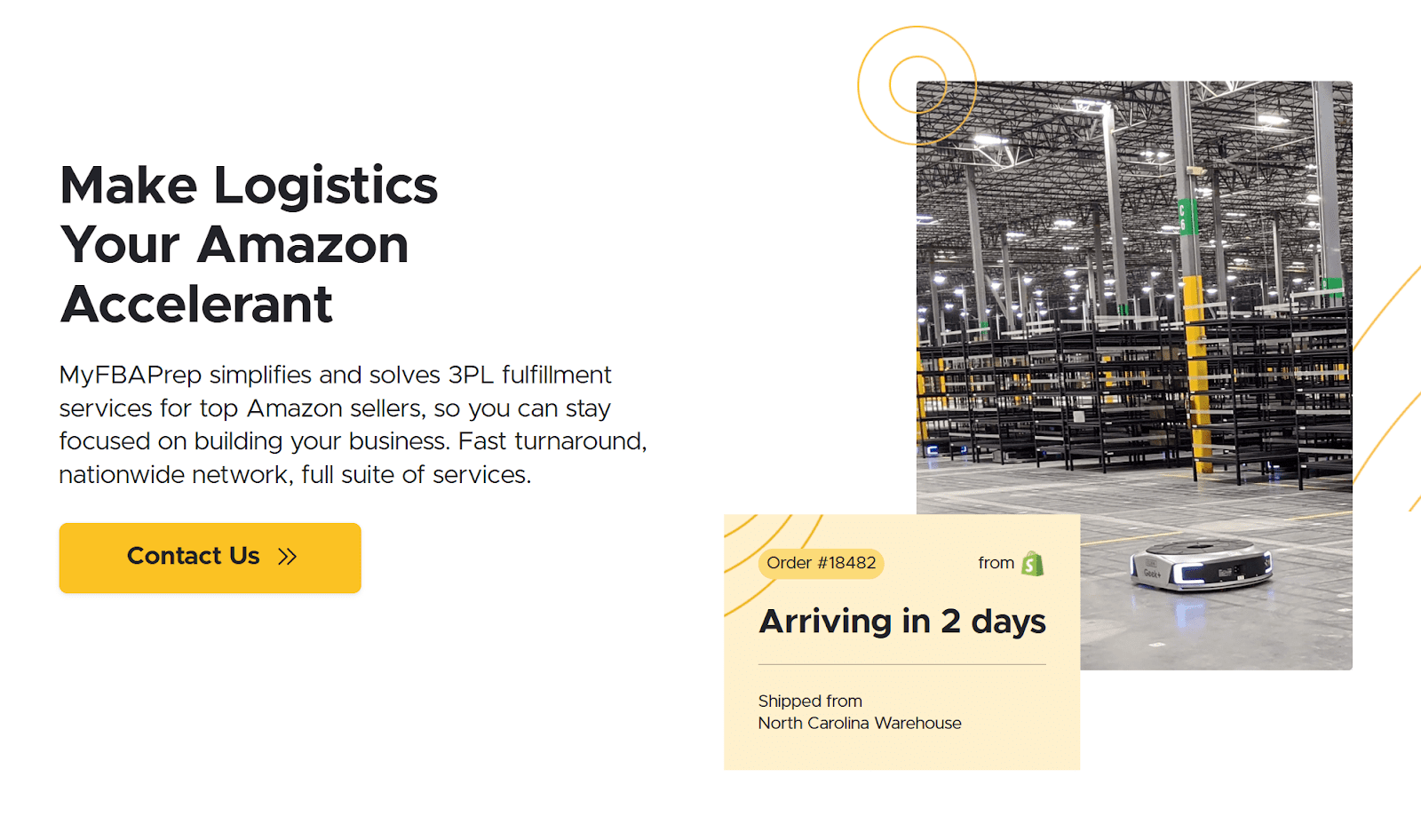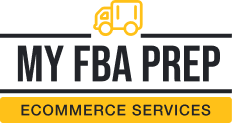
SFP Amazon: Unlocking Seller Fulfilled Prime

In the extremely competitive world of eCommerce, one key aspect can make or break your business: free and fast shipping. Amazon set the bar high for this offering in part thanks to their Prime program, which enables free same- and two-day delivery. Now, two-day shipping is the standard expectation for online consumers.
For third-party sellers, participating in Amazon Prime typically means using Fulfillment by Amazon (FBA). However, Seller Fulfilled Prime (SFP) is an alternative option that allows merchants to ship Prime-eligible orders directly from their own warehouses. The program is a game-changer, particularly for eCommerce businesses and Amazon merchants seeking greater control over their end-to-end fulfillment.
For a comprehensive explanation of SFP, we’ll explore everything you need to know about it — how it works, its upsides and downsides, and how you can become a successful SFP Amazon seller.
What is Amazon SFP?
The SFP program allows third-party vendors to offer Prime delivery without using Amazon’s fulfillment centers. Instead, sellers take care of storing, packing, and shipping goods from their own facilities while adhering to the platform’s stringent shipping standards.
Compared to FBA, where Amazon handles fulfillment and customer service, SFP enables sellers in the Fulfilled by Merchant (FBM) program to integrate their logistical operations into Prime’s infrastructure. Once enrolled, you can display the Prime badge on eligible FBM listings, but you must consistently meet Amazon’s high standards for shipping, customer service, and delivery performance.
Who should use Amazon SFP?
Due to its comprehensive criteria and SLAs, we recommend SFP for merchants with established fulfillment capabilities, as you have to meet Prime-level shipping requirements. For instance, you must be able to provide same- and two-day deliveries consistently.
Smaller FBM sellers, however, can still take advantage of SFP as long as they choose the right third-party logistics (3PL) partner.
Pros and cons of Amazon SFP
Like other Amazon programs, SFP offers eCommerce businesses a unique blend of benefits and challenges. To thrive as an enrolled merchant, you must clearly understand and plan for each aspect.
Advantages of SFP
- Reach Prime shoppers: Prime currently has over 200 million members worldwide. Its presence in the U.S. alone is extremely strong, with about 75% of the country’s Amazon customers participating in the program.
- Avoid FBA’s fees: You incur inventory storage and fulfillment charges for using Amazon’s distribution capabilities. Through SFP, however, you’re able to provide Prime services without being tied to Amazon’s costs or warehouse limitations.
- Greater control over fulfillment: As an FBM seller enrolled in SFP, you maintain full control over your inventory, handling, and shipping processes. That’s critical, especially if you sell specialized or fragile products.
- Robust customer experiences: FBM lets you offer convenient shipping methods and use custom packaging. SFP takes it a notch higher though, as you can deliver Prime experiences with a branded or personalized touch.
- Improved Featured Offer eligibility: FBA listings are favored to win the Featured Offer, because Amazon prefers their strong fulfillment network. Enrolling in SFP, however, makes you more competitive, as you must consistently provide fast, free shipping.
Disadvantages of SFP
- Rigid standards: To become an SFP Amazon merchant and maintain your status, you must regularly abide by the eCommerce giant’s strict criteria and SLAs. That can be operationally demanding.
- Infrastructure requirements: If you lack the resources to invest in your own picking, packing, and shipping capabilities, SFP can be a major challenge. In such cases, the best option is to partner with a 3PL that aligns with your needs.
- Responsibilities and overhead costs: Despite avoiding FBA’s storage and fulfillment fees, the end-to-end process is still your responsibility. You may require additional labor, systems, and logistics to maintain Prime-level shipping speeds at high volumes.
- Lengthy and intensive onboarding: Getting approved for SFP is a rigorous and time-consuming process, as businesses must undergo an extensive pre-qualification and trial period.
How to enroll in SFP
Now that you have a clear idea of what SFP delivers, as well as the advantages and drawbacks you can anticipate, we’ll quickly guide you through how to get into the program.
Step 1: Pre-qualify
To start, make sure you’re eligible to begin the SFP trial period. First, you must possess these two prerequisites:
- A U.S. address set as your default shipping address
- A Professional selling account
Then, over a 90-day period, you’re required to meet these criteria set by Amazon:
- Fulfilled no less than 100 orders yourself
- A cancellation rate under 2.5%
- A valid tracking rate above 95%
- A late shipment rate less than 4%
Step 2: Register
Once you’ve successfully followed the standards in the previous step, you can register for the SFP trial period.

Image source: Amazon
You can do this by simply clicking Register for the trial on Amazon’s SFP page. Make sure you’re logged in to Seller Central first.
Step 3: Pass the trial period
After registration, you’ll undergo a 30-day trial to prove you can meet and maintain Prime standards. That requires you to hit these benchmarks:
- Fulfill 100 or more Prime trial orders
- A minimum on-time delivery rate of 93.5%
- No less than a 99% valid tracking rate
- A seller-initiated cancellation rate under 0.5%
- Meet minimum targets for one- and two-day delivery promises
Step 4: Enroll and regularly meet program requirements
Once you’ve satisfied the trial period’s requirements, you’ll pass and become a fully enrolled SFP Amazon merchant. To keep your Prime badge, however, you’ll consistently have to comply with additional criteria on top of the ones you’ve adhered to since the trial period, namely:
- Provide Prime members with free one- and two-day delivery
- Offer free standard shipping for all customers nationwide
- Use shipping methods that support weekend pickup and delivery of Prime orders (Saturday, Sunday, or both)
- Allow free returns for items weighing less than 50 pounds
- Let Amazon handle all post-order customer service inquiries
Step 5: Monitor and maintain performance
At this point, all that’s left is to ensure you fulfill Amazon’s requirements and SLAs, which entails tracking your performance. That helps you pinpoint any shortcomings so you can make the necessary adjustments. Amazon provides a couple of tools that monitor how your business is doing:
- Fulfillment Insight Dashboard: With this, you can see whether your actual delivery times meet promised ones.
- Account health: This lets you track your rates for order defects, late shipments, pre-fulfillment cancellations, and valid tracking. You can even view your compliance with Amazon’s policies.
Fulfillment alternatives for SFP Amazon sellers
SFP doesn’t fit every business model. If you find this to be the case, consider other fulfillment options:
- FBA: If you’re after the Prime badge and mostly dabble in fast-moving goods, FBA may be best for your brand. However, keep in mind that, despite high inventory turnover racking up fewer fees, you’ll have less control over your business since Amazon handles the end-to-end fulfillment.
- 3PL: Working with an established 3PL lets you outsource your fulfillment operations to specialists, which eases your responsibilities on Amazon’s marketplace. An especially capable provider can even help you attain the benchmarks necessary for successful SFP enrollment.
- Hybrid model: Depending on their offering, some sellers use a combination of FBA and FBM. Items that sell quickly, for instance, are better suited to FBA.
FBM, meanwhile, is ideal for large, specialized, or slow-moving products (mainly because they’ll incur higher storage and fulfillment fees through FBA). You can still qualify for SFP as well through this approach as long as you have robust in-house fulfillment capabilities or a reliable 3PL.
Best practices for Amazon SFP success
Making it into SFP can open many doors for your Amazon business, but you’ll need smart strategies to thrive. To help you succeed as an SFP Amazon merchant, here are some best practices you can employ.
Leverage technology
The right software can streamline your operations and prevent fulfillment delays. A distributed order management system (DOMS), for example, possesses features geared towards effective inventory management, sales, and customer service.
Optimize your warehouse layout
One way to speed up your fulfillment process is to organize your inventory efficiently. By being deliberate with how you store items, you can reduce handling times and ease management for all personnel.
For instance, leaving fast-moving goods in easily accessible spots enables quick pick and pack for your bestsellers. Low-turnover items, on the other hand, can be situated in less reachable spots, as they won’t be picked, packed, and shipped as often.
Track your performance metrics
To meet Amazon’s Prime-level standards consistently, you must regularly monitor your shipping metrics. They’re not only requirements for SFP Amazon sellers but also barometers of your business’s health.
Then, take proactive steps to resolve any identified fulfillment issues, such as through tweaking your logistical and inventory management processes or customer service. Doing so drives your store’s success.
Account for seasonality
Prepare for peak shopping periods like Black Friday and the winter holidays. Additional labor and resources may be necessary to maximize these sales opportunities without missing delivery targets.
A great example is Prime Day, Amazon’s biggest annual event. In fact, its 2024 iteration has proven to be record-breaking, with the two-day event seeing millions of early Prime sign-ups and surpassing the 200-million mark for items sold.
To make the most of the event, check out these tips we’ve published and fully prepare your brand for Prime Day with FBM.
Partner with a reliable 3PL

A strong carrier can ensure smooth shipping and support your SFP success. MyFBAPrep, for instance, specializes in fulfilling orders on behalf of Amazon sellers, guaranteeing everything is properly picked, packed, and shipped to deliver seamless experiences.

We even provide services specially designed for SFP to help sellers enroll in the program so they can quickly enjoy Prime-level delivery speeds and Prime badge eligibility.
Amazon SFP FAQs
We’ve covered the information you need to enroll and participate in Amazon’s SFP program. To conclude this article, we’ll answer some questions sellers normally ask.
How much does Amazon SFP cost?
SFP doesn’t charge direct fees. Sellers need only worry about the standard cost of selling on Amazon, as well as expenses for any additional fulfillment capabilities, labor, and the like.
Can new sellers join Amazon SFP?
Yes, new sellers can enroll in the SFP program. Given its lengthy onboarding process and stringent standards, however, we only recommend more experienced or established sellers join it.
What happens if I’m unable to meet SFP shipping requirements?
Consistently failing to meet Amazon’s standards can lead to your removal from the SFP program or loss of the Prime badge.
Do I need specific software for SFP?
Not necessarily, but we suggest adopting an order management software that integrates with Amazon, as this will help you effectively manage inventory and shipping. In turn, that streamlines your fulfillment processes.
Wrapping up — SFP presents rewarding opportunities
The SFP program offers merchants the chance to tap into Prime’s vast customer base without using FBA. Although it poses some challenges, you can drive success as an SFP seller with robust logistics, careful planning, and the ability to meet Amazon’s standards.
By enrolling in SFP, you not only retain control over fulfillment but also benefit from the credibility and sales boost the Prime badge offers. Follow our instructions to join with minimal hassle and start selling. For those able to manage the program’s operational demands, the rewards can be substantial.


